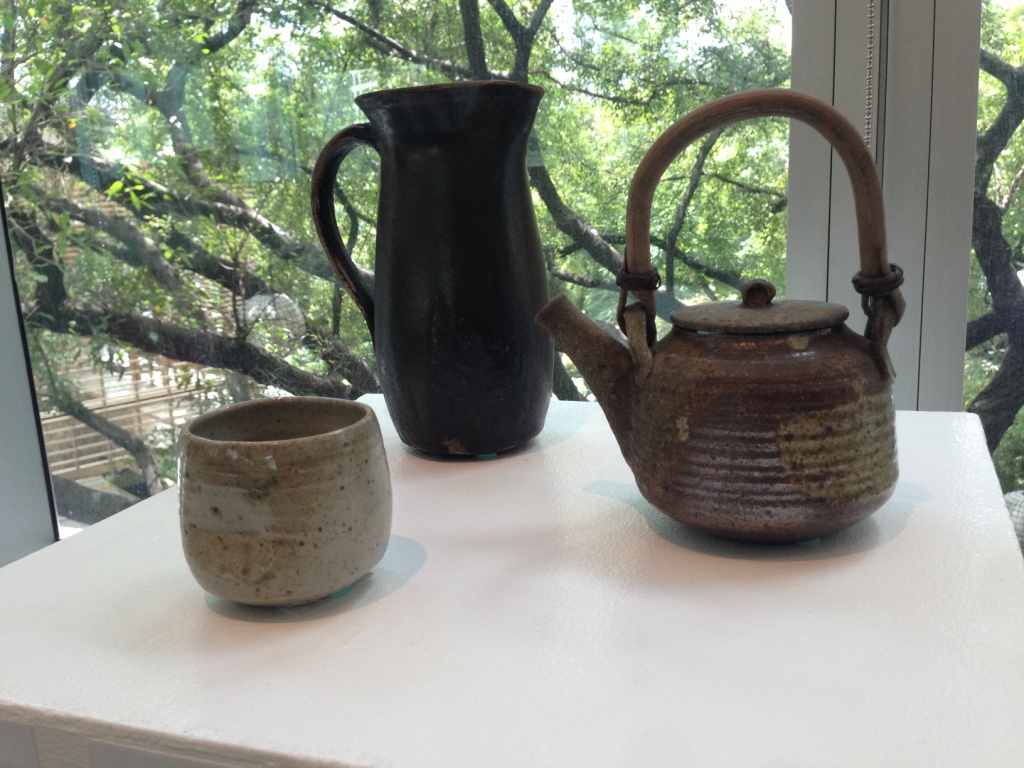By PATRICK KING PASCUAL
THEY are shapeless in form but they are captivating to one’s eye.
They are made of intricately structured clay with different colors on its finish.
They look unusual but there is beauty in each piece.
They are “Terrain: The works of Nelfa Querubin,” at the Ayala Museum in Makati. The exhibit, a collection of magnificent ceramic art pieces that date back to the 1970s, runs until April 28.
Unlike sculptures, ceramic pieces or clay artworks require a more complex approach to its creation: from the molding of the clay to shaping it and finally making a piece of art out of it. One Filipino artist from Iloilo mastered and pioneered this art form.
“I was dealing with Iloilo clay and it was experimental at the same time. I want to express myself artistically through clay. I always get these surprising results when I’m molding a piece, which I like very much. I can express my artistic aesthetics when I do clay art. So it’s science and art at the same time,” ceramic artist Nelfa Querubin-Tompkins explained.
Querubin started in the world of art as an illustrator and painter, mastering the techniques in graphic arts. She has produced several pieces of print artworks.
Despite her early success in printmaking, Querubin was more captivated by creating ceramic art pieces. It was during the 70s when she focused on making clay artworks.
She molds her pieces using a self-constructed kiln, forming the clay on top of a low fire to create a more strong and sturdy ceramic sculpture.
“I was one of the pioneering artists in this area of art here in the Philippines. And because clay has that kind of character that is so easy to control and yet it is hard, yet it is complex, yet it is responsive to human touch – I’m so intrigued and that gives me the urge to create more complex and beautiful pieces,” Querubin said.
“I like something that is unknown. And I like surprises – I found that in this kind of work. In ceramic art, you create everything from scratch,” she added.
She gets inspirations from the environment as she has moved from one place to another over the years —her pieces tell the story of the locality she’s been to.
“I’m a naturalist by nature; I was exposed to nature at an early age and it has given me so much pleasure and happiness, and you see that in my works,” she explained. “The beauty of nature grows in me. I’m so much attached to it. So every time I work (and) create a piece, the country or the inspiration I’m exposed to is already in my subconscious.”
She added: “The beauty of nature comes out in my pieces; the color, the texture of the environment and also the shape. My works are mainly the shape of rocks… it’s irregular. I used to collect stones.”
In spite of the growing awareness of the general public to the world of arts, for Querubin, Filipinos need to be educated more not just in art in general, but in the fascinating world of ceramic art.
“They should know more about art to appreciate it properly. It’s not just about colors, shapes or the abstract of life. Every artwork tells a story. You may not fully understand what the artist wants to convey through his works, but you’ll at least read … (something into) the artwork, if you have proper knowledge about it,” the artist said.
She noted there are schools and universities that have art education and appreciation in their respective curriculums. For her, a person should be exposed to the fascinating world of art at a young age.
Querubin encourages people to visit a museum if they have a chance because such a place also helps educate the public on Philippine culture through the works of different artists. This is especially true if the artists make use of local and indigenous materials like clay.
“People look down on ceramics because these are made of clay (so) I am challenging the museums to take a higher step when it comes to educating the public. I hope they’re going to put up some more works of different artists, and to exhibit more ceramic artworks,” Querubin said.
